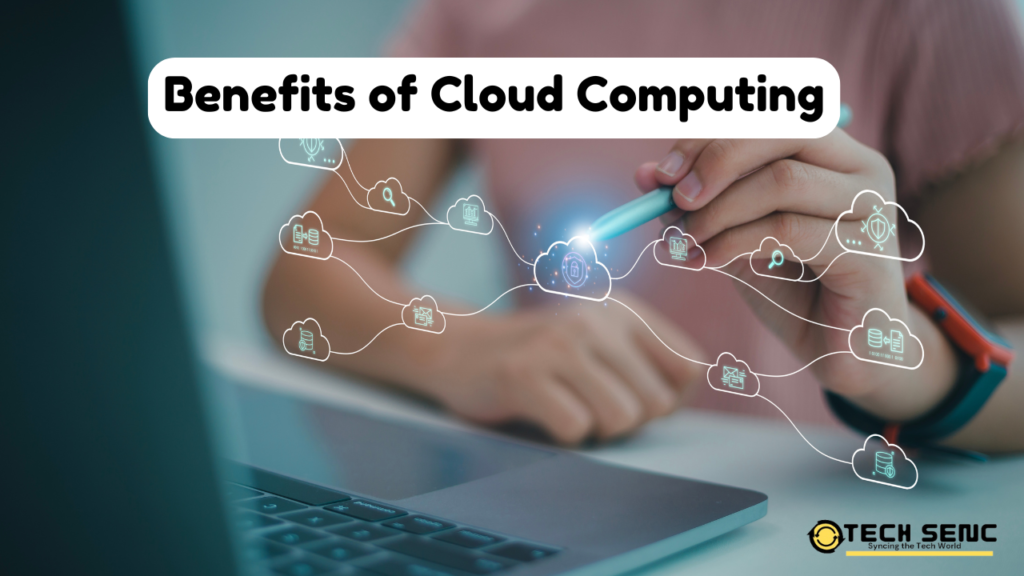Cloud computing is a technology that allows businesses to store data What is Cloud Computing? Types & Benefits and information on a remote computer rather than on a local computer.
It plays a vital part in our everyday lives, whether we are accessing a cloud-hosted application like Google Gmail or playing a cloud-hosted videotape game.
Layers of cloud computing
Cloud computing can be divided into two different layers.
1. Front-end Substrate
- What is Cloud Computing? Types & Benefits in 2024
The front end refers to the user interface and client side of cloud computing, where users interact with the cloud through various devices and applications. This layer is responsible for accessing and consuming cloud resources and services.
2. Back-end Substrate
The back end, also known as the server side, consists of the infrastructure and resources that power the cloud, including servers, storage, databases, and software. This layer is responsible for managing and providing cloud resources and services to users.
Types of cloud computing
1. Private cloud
In a private cloud, computing services are offered over a private IT network for the dedicated use of a single association. A private cloud refers to cloud computing resources used simply by a single business or association.
It combines numerous benefits of cloud computing, including pliantness, scalability, and ease of service delivery, with the access control, security, and resource customization of an on-demand structure.
2. Public cloud
Public cloud refers to services handed over the internet by third-party providers to multiple users in shared infrastructure. It’s a type of cloud computing in which a cloud service provider makes computing resources available to users over the public internet.
Public cloud providers manage and maintain the structure, including servers, allowing businesses to concentrate on invention rather than IT conservation. Microsoft Azure is an illustration of a public cloud.
3. Hybrid cloud
A hybrid cloud combines the rudiments of both public and private cloud models by allowing associations to integrate their on-demand structure with public cloud services.
The “best of both worlds” cloud model allows a shift of workloads between private and public clouds as computing and cost conditions change.
By allowing data and operations to move between private and public clouds, a hybrid cloud gives your business greater flexibility and further deployment options. It also helps optimize your structure, security, and compliance.https://techsenc.com/crypticstreet-com-
Benefits of Cloud Computing

These are some important benefits of cloud computing.
1. Cost
Traditional IT setups require substantial upfront investments in hardware, software, infrastructure, and energy consumption. They let you offload some or all of the expense and effort of purchasing, installing, and managing mainframe computers.
On the other hand, it offers a pay-as-you-go model where businesses only pay for the resources they use.
2. Increased Speed
Speed refers to the rapid deployment and scaling of IT resources. Cloud services provide on-demand access to computing resources, without the hassle of traditional infrastructure.
This allows brisk operation development, testing, and deployment, significantly shortening time-to-request.
3. Unlimited Scalability
Scalability refers to the capability to fluently acclimatize resources to meet changing demands. The cloud allows associations to grow their stoner base from simply many to thousands in a very short time.
It provides pliantness and tone-service provisioning, so rather than copping redundant capacity that sits unused during slow ages, you can gauge capacity up and down in response to harpoons and dips in business.
4. Security
- Cloud computing
Security involves guarding data, operations, and structures from unauthorized access, breaches, and cyber pitfalls.
Numerous cloud providers offer a broad set of technologies and controls that strengthen your overall security posture, helping protect your data and apps from implicit pitfalls.
Cloud providers apply robust security measures to ensure the confidentiality, integrity, and vacuity of their resources.
Challenges of Cloud Computing

It also presents a set of significant challenges that associations must address to fully realize their potential. These are some important challenges that come with composition.
1. Downtime
Downtime refers to times when cloud services are unapproachable or not performing optimally, impacting access to operations and data.
This can be caused by a variety of factors, including hardware failures, software bugs, cyberattacks, or maintenance conditions.
2. Security risks
Security risks in cloud computing involve risks similar to data breaches, unauthorized access, and cyberattacks.
Sensitive data stored and reused by third-party cloud providers can be vulnerable to hacking, phishing, and malware.
3. Limited access
Limited access in the cloud refers to restrictions on accessing cloud resources and services due to factors such as internet connectivity issues, geographic constraints, and provider-specific limitations.
Dependence on the internet means that any network dislocations can hamper access to essential operations and data.
Frequently Asked Questions (FAQs)
Q1.What is cloud computing?
The cloud is a global network of remote servers. They involve the delivery of resources such as storage, computing, networks, software, or applications from a centralized infrastructure.
Q2.How much does the cloud cost?
The cost of cloud computing varies depending on factors such as service type, usage, and provider.. Costs can range from a few dollars per month for basic services to thousands for extensive enterprise solutions, impacting overall IT expenses.
Conclusion
Cloud computing offers significant benefits like flexibility, scalability, and cost savings, but it also presents challenges that must be managed.https://www.hoyolab.com/article/27427991
They make it very easy for companies to give their products to end-users without fussing about configurations and other conditions.

Hi there! I’m Tina Martin, the Owner of Techsenc.com. I’ve been working in SEO for 5 years now, and I love helping businesses grow online. I’m all about creating content that search engines love, and making websites visible to the right people. I stay on top of the latest SEO trends so you don’t have to! Through my work, I hope to share my knowledge and help others succeed online.
